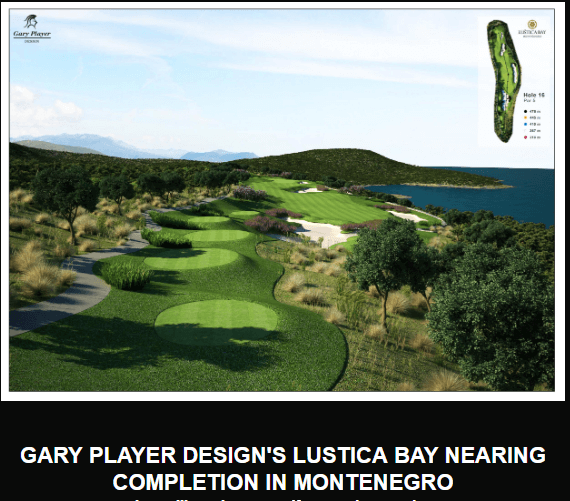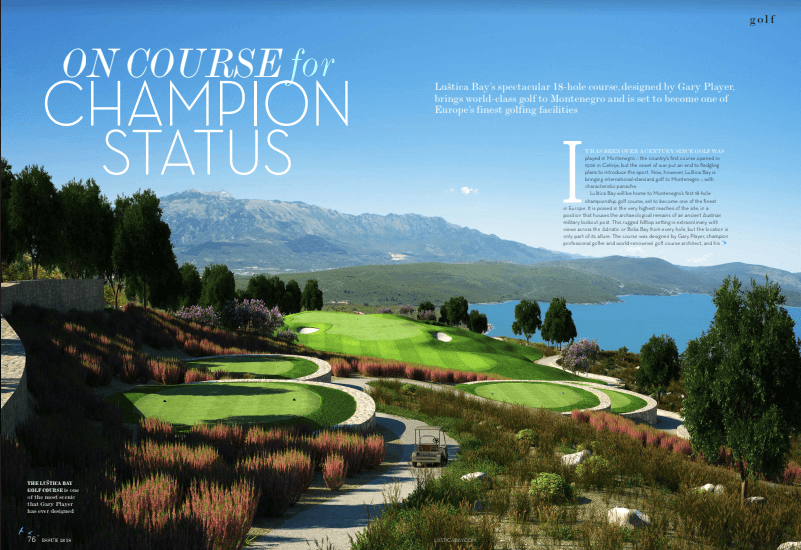Cooperation Discussed for Agricultural Project in Bosnia, Croatia and Montenegro
DUGA RESA, January 28, 2020 - Officials of Karlovac County and the municipality of Velika Kladuša, Bosnia and Herzegovina, negotiated on Tuesday in Duga Resa cooperation in a project of long-term development of agricultural production in Bosnia and Herzegovina, Montenegro and Croatia, which will be co-financed through the EU's INTERREG programme.
It is a project of cross-border cooperation between Bosnia and Herzegovina, Croatia and Montenegro, coordinated by the north western Bosnian town of Velika Kladuša, so the talks with representatives of the City of Duga Resa and other local units of the Karlovac County were attended by the Velika Kladuša mayor, Fikret Abdić.
The municipalities in Karlovac County, that have shown interest in the project, are part of a total of about 40 municipalities of the three countries, which were visited by the representatives of the municipality of Velika Kladuša and then offered to be their partners in the project, with the aim of cultivating uncultivated land for the benefit of local communities.
The adviser to the Velika Kladuša mayor, Ervin Abdić, told reporters after the meeting that the project was definitely under way, and that they only had to determine who would participate in it. He said that a Memorandum of Cooperation and Friendship would be signed in Velika Kladuša on 22 February with the cities and municipalities which decide to participate, and that they would know the final number then.
“All the communities in Bosnia and Herzegovina, Croatia and Montenegro which we have visited consider the project useful. In the initial phase, at least two hectares would be cultivated in each municipality, that is, a total of about ten hectares in the five years of the project, and the cost for each municipality would be €250,000, 75 percent of which will be reimbursed from EU funds," Abdić added.
Duga Resa Mayor Tomislav Boljar said that this was the third meeting with the initiators of the project and that in the meantime they had talked to farmers and owners of multiple family-run farms (for which the acronym in Croatian is OPG) about establishing chestnut plantations, which would be the dominant crop.
“There is interest in chestnut plantations, especially in this way where there is co-financing, expert assistance and placement, and it is a crop more resilient to the climate woes we suffer from. The most important thing is to bring neglected land into use, because that will help someone to remain living in the countryside, and chestnut is also good for beekeeping and ecology in general,” Boljar underscored.
Chestnut is just one possible crop, but it is an interesting one because there is already plenty of valuable information from a large cross-border project, completed at the end of 2019, on the promotion of chestnut and its protection against pests, also coordinated by Velika Kladuša. The partners in that project were the Croatian cities of Karlovac, Petrinja and Vojnić, while the partners from Bosnia and Herzegovina were Buzim and the Agricultural Institute from Bihać.
More agriculture news can be found in the Business section.
Croatia Sees Montenegro as Next EU Member State
ZAGREB, January 15, 2020 - Montenegro has made the most progress among EU membership candidates and Croatia sees it as the next member state, Croatian Ambassador Veselko Grubišić said in Podgorica on Wednesday, presenting the priorities of Croatia's presidency of the Council of the EU.
Croatia will fight for its neighbours and their prospects of joining the EU as soon as possible, he said, presenting the priorities to Montenegrin officials.
"We'll continue to help all six countries in the region on their EU journey. We'll continue to fight for the neighbourhood," Grubišić said, calling on Montenegro's leaders to double their reform efforts.
"Montenegro is the leader in the accession process and must be the next EU member state. Neither we nor you have the right to a different outcome," he added.
He said attention would focus on deepening the single market, boosting competitiveness and promoting investment, digitisation and enterprise. "We'll support the implementation of the European pillar of social rights and underline the need to ensure a better life for every citizen of the EU and Europe."
Prime Minister Duško Marković said Montenegro was fully committed to meeting the membership requirements. Montenegro is negotiating under the strictest criteria the EU has ever had in the enlargement policy and in such conditions, with a relatively young administration, it is the leader of the European integration process, he added.
Although Montenegro does not advocate changing rules mid-game, its leaders believe "the negotiating process should be made more concrete and more measurable and its results clearer and more visible, both to the participants in the accession process and to all Montenegro citizens," Markovic said.
The head of the EU Delegation in the country, Aivo Orav, said enlargement was a process that was continuing, despite certain difficulties in recent months.
The message for Montenegro is that it's the leader of the integration process, that we have no more time to wait to resolve certain problems in the EU and that it's better to be ready for joining the EU as soon as possible, he said, adding that the rule of law was in the centre of the enlargement policy.
More news about relations between Croatia and Montenegro can be found in the Politics section.
Montenegro's Croat Minority Contributes to Positive Processes in the Country
ZAGREB, October 19, 2019 - The Croat minority in Montenegro contributed significantly to the country's accession to NATO and has been contributing to its accession to the European Union, and the Montenegrin state has secured, primarily through its election laws, a privileged status for the Croat minority, Montenegro's Human and Minority Rights Minister Mehmed Zenka has told Hina.
"The Croat minority has contributed very much to all positive processes in Montenegro, notably integration processes. Also, a positive step was made through election laws facilitating the representation of the Croat minority in the Montenegrin parliament. Montenegro and Croatia have a joint intergovernmental committee monitoring the status of Croats in Montenegro and the status of Montenegrins in Croatia. We would like to have such cooperation with all countries in the region," Zenka said.
Croats are the smallest constitutionally recognised community in Montenegro. According to the last census, in 2011, they accounted for 1% of Montenegro's population. Owing to their privileged status, they have a guaranteed seat in the Montenegrin parliament.
Zenka also underlined the impact of the Croat community on Montenegro's cultural and historical heritage, "of which Montenegro is proud".
"We must not forget the history of navigation of Montenegrin Croats. They brought values they gathered all over the world to the Bay of Boka and Montenegro. That's why I say that even if there were not a single Croat in Montenegro, we must celebrate Croats because of the cultural and historical heritage which they brought and which Montenegro has inherited," the minister said, noting that one of such values was the Boka Navy, which this year marks its 1210th anniversary.
The Montenegrin government expects the Boka Navy to be inscribed on UNESCO's list of non-tangible cultural heritage by the end of this year.
"I believe that Montenegro and Croatia will find a common language and make sure together (the Boka Navy) is inscribed on UNESCO's list," Zenka said.
Speaking of the status of the Montenegrin minority in Croatia, Zenka said that he received "positive signals" from societies gathering Montenegrins but that there was room for the improvement of their status as well as for the improvement of the status of Montenegro's Croats.
More news about relations between Croatia and Montenegro can be found in the Politics section.
Croatian MEP: Western Balkans Cannot Be Left Out of EU Foreign Policy
ZAGREB, October 15, 2019 - The European Parliament rapporteur on Montenegro and Croatian MEP, Tonino Picula, said on Monday that the Western Balkans must not be left aside in planning the future EU foreign policy.
"What is encouraging and what should be shared with the Montenegrin public is that the new European Commission, aware of many problems it is inheriting from the previous Commission, has chosen as the High Representative for Foreign Affairs and Security Policy a person who made it clear during a hearing before the European Parliament that the Western Balkans cannot be left aside in planning the future European foreign policy," Picula said in an interview with Montenegrin television.
Picula said he had visited Montenegro many times and was acquainted with the political reality in the country. He said it was not easy to predict Brussels' plans at a time when the EU was facing a lot of internal problems, but he encouraged Montenegro to continue on its EU path.
"Montenegro has made great progress. This is, first of all, some sort of not just a technical process but also a political process so that things in Montenegro would be better," Picula said.
Picula was appointed rapporteur on Montenegro on October 10.
More news about relations between Croatia and Montenegro can be found in the Politics section.
15th Anniversary of Classes in Croatian Language in Montenegro Marked
ZAGREB, September 29, 2019 - The 15th anniversary of classes in the Croatian language in Montenegro was marked in Tivat on Saturday, with the Croatian president's envoy underlining the importance of Croatia's institutional connection with expatriate communities around the world.
Croatia's consul general in Kotor, Jasminka Lončarević, conveyed President Kolinda Grabar-Kitarović's message, which also underscored the importance of building national unity and solidarity with full respect for the states and nations where Croats live.
Lončarević congratulated, on behalf of Grabar-Kitarović and the Consulate General in Kotor, "all students, all teachers and their parents as well as everyone who, in these 15 years, have maintained the continuity of the Croatian language and culture in Montenegro."
Classes in Croatian in Montenegro began on 18 September 2004 at the initiative of the Croatian Cultural Association Napredak from Tivat, in cooperation with the Croatian Civil Society from Kotor and the Croatian Education Ministry.
More diaspora news can be found in the dedicated section.
A Tale of 2 Golf Courses: Dubrovnik and Lustica Bay, Montenegro
April 12, 2019 - Continuing our look at the lack of foreign investments in Croatian tourism, taking a closer look at one of the government's flagship tourism strategies - golf. Oh dear.
This is not an article about golf.
This is not an article debating whether or not golf tourism is a good or bad thing, that is an entirely different discussion.
This is an article about incompetence.
This is an article about a sector of tourism which is central to Croatia's tourism strategy (according to its own documents) and yet where not only has nothing happened for a decade in terms of progress, but the Croatian tax-payer is facing a potential imminent bill of 500 million euro from an Israeli investor who has now given up on his golf dream in Dubrovnik.
Meanwhile in Montenegro...
Whenever I criticise something about Croatia (always in a constructive manner) and praise a neighbour, the haters flood my inbox with expletives and advice that I should leave Croatia. Apart from finding this pretty amusing, it highlights one of the main problems which is stopping Croatia from progressing, at least in my opinion. I call it the policy of deflection. Rather than accept that a foreigner might have a valid point and try and learn and improve, the standard response is abuse and attack - trying to deflect the issue. And so nothing changes.
I can understand why some people get angry when I compare the incompetence of our Kings of Accidental Tourism with other countries. Lessons from Macedonia on how to promote the wine industry, for example. Lessons from Rwanda, on how to use football to promote tourism. And Lessons from Montenegro, on how to become a luxury tourism destination, while turning Dubrovnik into an extension of luxury Montenegro's offer in the process. But that does not stop me wanting to try. As a foreigner living here for 17 years, running news portals in Croatia, Montenegro and Slovenia, I have perhaps a different perspective, and I genuinely want the best for Croatia, which is why we need to learn what we are doing badly, and what others are doing well. And then learn and improve.
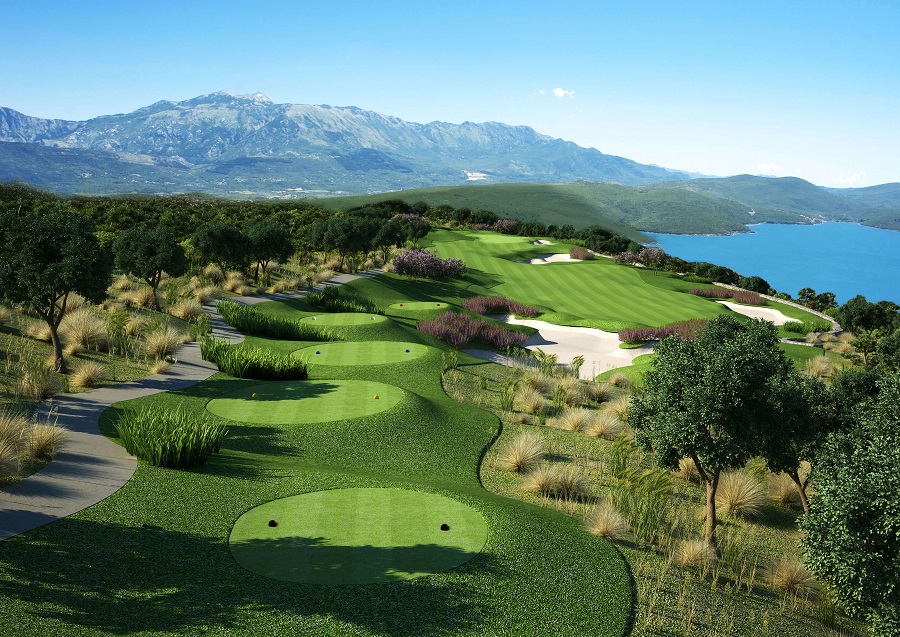
(All images and renderings courtesy of Lustica Bay golf development)
Today, we look at perhaps the finest example of incompetence in tourism strategy that I have come across in my time in Croatia. A sector of tourism whose lack of progress is the poster child of why foreigners are investing less money in Croatia each year than its diaspora are sending home in remittances. A sector of tourism where the neighbours are leading the way in luxury tourism.
The sector is golf.
As mentioned above, this article is not about whether or not golf is a good thing for the region. This article is looking at the strategy of Croatia's tourism gurus and a comparison what is happening just across the border in Lustica Bay in Montenegro.
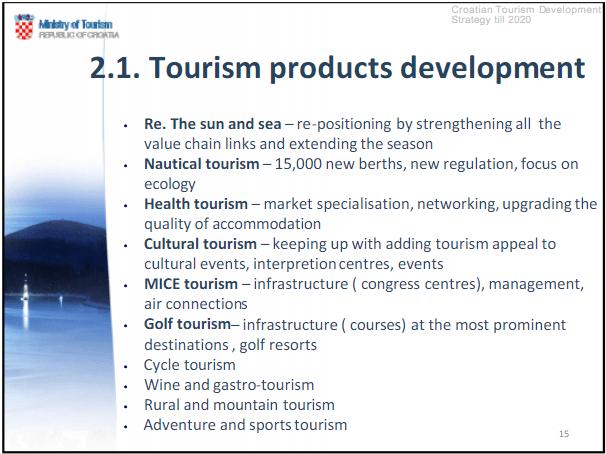
Let's start at a fixed point - the Croatian Ministry of Tourism's Tourism Development Strategy 2013-2020. As you can see above, golf is central to the country's strategy. I contacted the Ministry of Tourism last year to ask for details: Here was the reply:
"The 2020 tourism development strategy foresees the construction of 30 new high-quality golf courses, roughly at the following locations: 14 in the northern Adriatic, 8 in the southern Adriatic, and 8 in continental Croatia."
Impressive indeed, except for one thing. Almost 5 and a half years into the plan, I had not heard of any golf course being constructed.
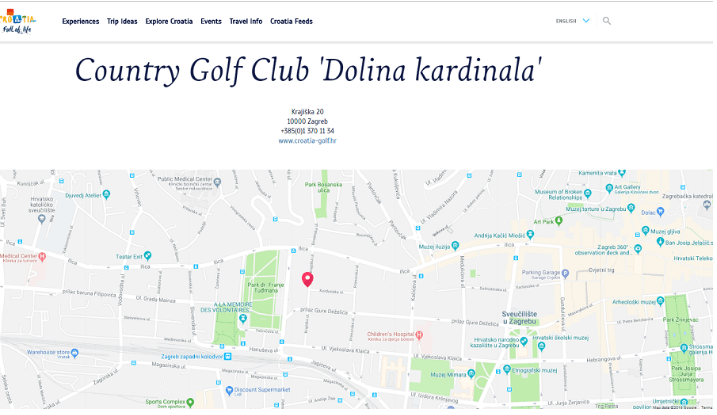
I asked how many courses Croatia had and how many were being built. Nobody seemed to know anything for sure. The ministry said there were three courses in Croatia, one of which was actually a driving range, the Croatian National Tourist Board trumpeted four courses, one of which was conveniently located in the centre of Zagreb (see above), whereas in actual fact...
... it had been abandoned for years (see drone video above).
Clearly, the strategy was not quite working, unless the Ministry was going to produce 30 golf courses and a white rabbit out of a hat.
This staggering non-performance did not deter our heroic ministry, however - far from it. In June last year, the ministry reported:
Joining the family of golf destinations is imperative for the Croatian tourism industry, because without it Croatia will remain a seasonal tourist destination, the first conference on golf tourism in Croatia said in the northern Adriatic town of Porec.
Assistant Tourism Minister Robert Pende said that Croatia would not be able to increase the accommodation occupancy rate significantly without making progress in the golf segment. He said that a lot had been done to adjust infrastructure as a prerequisite for any serious golf projects, especially on state-owned land.
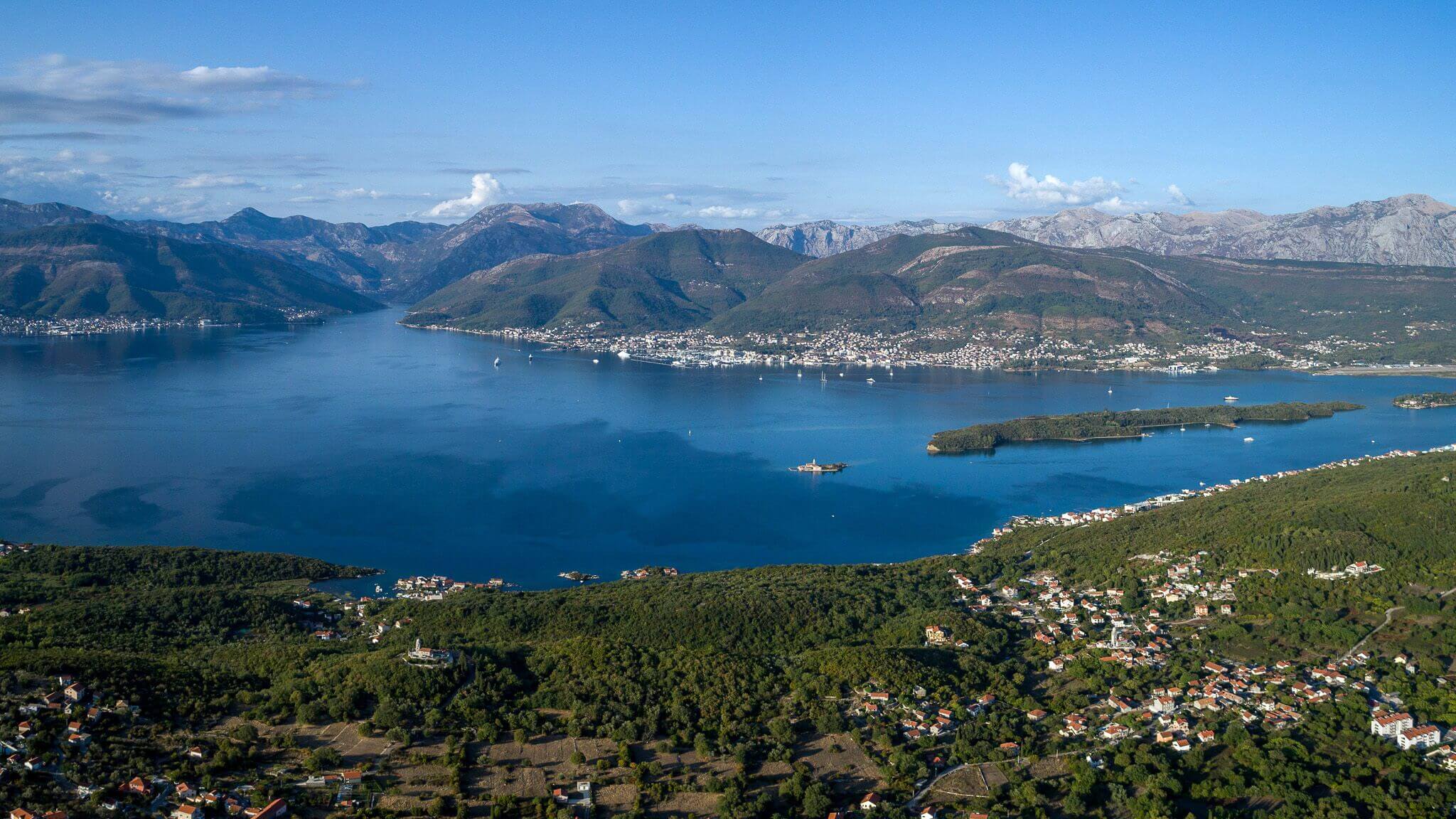
"With the existing investor interest, I think we have created preconditions for getting several golf projects in the next two to three years," Pende said, noting that Istria County was leading in that regard.
"Golf is additional content which all our competitors have. Croatia is very suitable for the development of golf tourism because of the proximity of outbound travel markets and the possibility of playing golf along the coast all year round. We must seize that opportunity," Pende said.
I contacted the Ministry of Tourism for clarification, but there was no reply.
Croatia's smaller Western neighbour, Slovenia, has 13 golf courses, despite golf not being a core focus, as far as I am aware. Interested in golf in Slovenia - here is the Total Slovenian News guide.
Croatia's love affair with pretending to be a golf destination then preventing anything from happening goes back much further than the 2013 strategy document. When I had my own real estate agency back in 2004, there were no less than 22 courses earmarked for Istria alone. And one of them had rather a famous backer.
Jack Nicklaus Begins Work on Golf Course in Croatia
ZAGREB Croatia, May 19, 2006. Jack Nicklaus' organisation doesn't invest in dud deals. Any wise investor would do well to note where he is building his golf courses.
The world's most famous golfer was met by Prime Minister Ivo Sanader (who only last week started a prison sentence), and a 200 million euro golf resort in Istria was announced. Want to know how it is going? Whatever Happened to Jack Niklaus Croatian Golf Course, Approved by PM Sanader? You can also check out the plans, looks very nice.
Jack's very same project was being offered on YouTube a decade later.
And the paperwork is almost finished...
Of course, the biggest golf story in Croatia at the moment is the failed Srd development above Dubrovnik from Israeli investor, Aaron Frenkel.
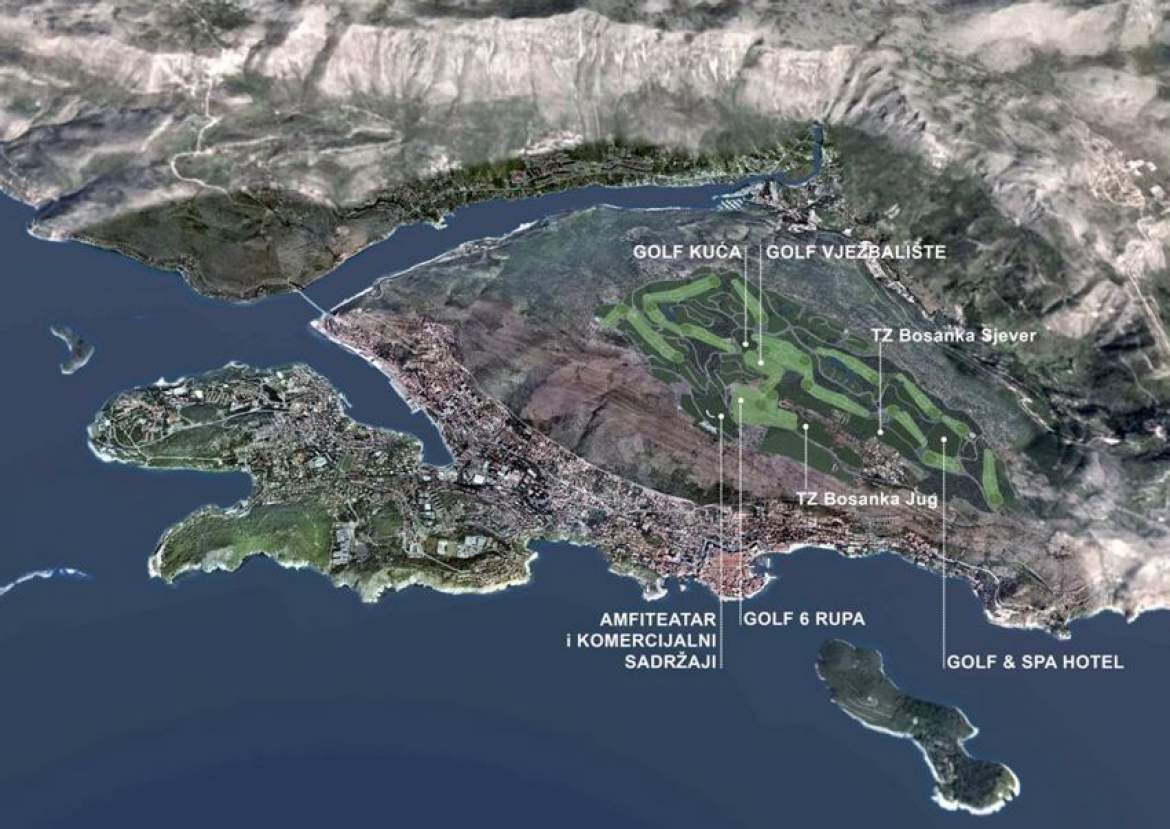
There is a LOT to this story, and I do not have the knowledge of the project to go into great detail about the reasons why the Srd golf project did not happen. That is was not popular locally was perhaps best exemplified by the results of a 2013 referendum on the project, where 10,051 votes against trumped the 1,846 for. From various people I have spoken to more familiar with the project, it appears to have failed through a cocktail of corruption, environmental campaigners, objections from those who defended Dubrovnik during its 1991 attack, and (I suspect) an element of local accommodation owners not fancying so much high-quality villa rental competition.

The investor has taken the case to arbitration in Washington, with a ruling due shortly. The Croatian taxpayer (that's you and me folks) looks set for a possible bill of up to 500 million euro.
So, we are now 6 years into the Ministry of Tourism's strategic plan to develop Croatia as a regional golf tourism tiger. The results so far: absolutely nothing close to the first phase of construction, and a potential bill of 500 million euro, as well as further loss of reputation among foreign investors.
Outstanding job!
Meanwhile, just over the borders...
I want to talk about Lustica Bay and Montenegro, but thought it also worthwhile mentioning a project just across the border in Republika Srpska, about 15 minutes from Dubrovnik Old Town. I have not heard anything about 'Dubrovnik Heights' in a while, but there were certainly plans to build a course just over the border. Using the brand of Dubrovnik, access to Dubrovnik Airport and the city as major draws. And while golf in Bosnia has been out of the news lately, here is an intriguing paragraph from the latest Gary Player newsletter, the famous golfer behind the signature 18-hole-course in Montenegro:
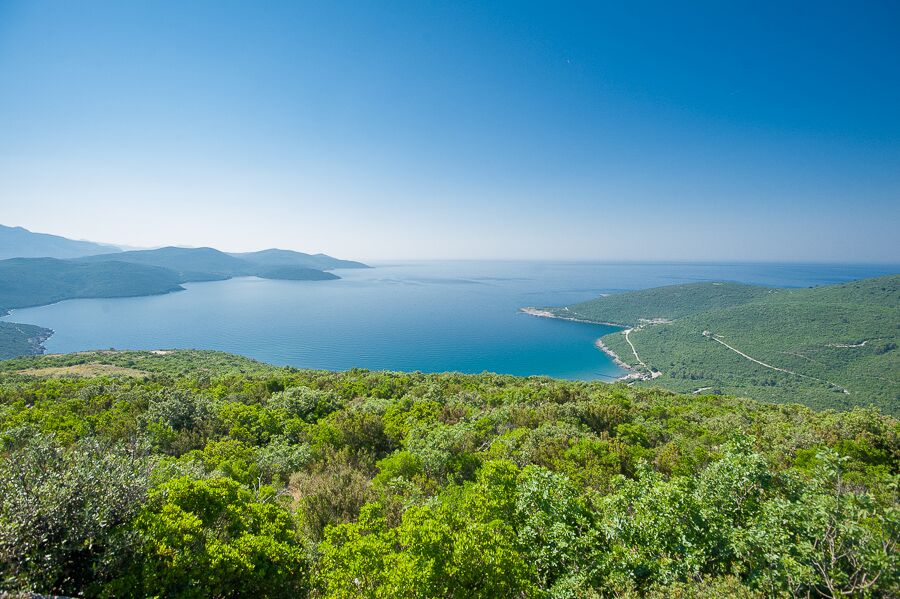
We would be delighted to start another project in Montenegro or the surrounding countries, but Lustica Bay is the one we are focusing on at the moment. Our design team is working on some feasibility studies for projects in Albania, Bosnia, Serbia and Romania so it’s a very active part of the world for us right now.
Albania, Bosnia, Serbia and Romania. But not the country with the defined tourism strategy to build 30 courses - Croatia.
And so to Montenegro.
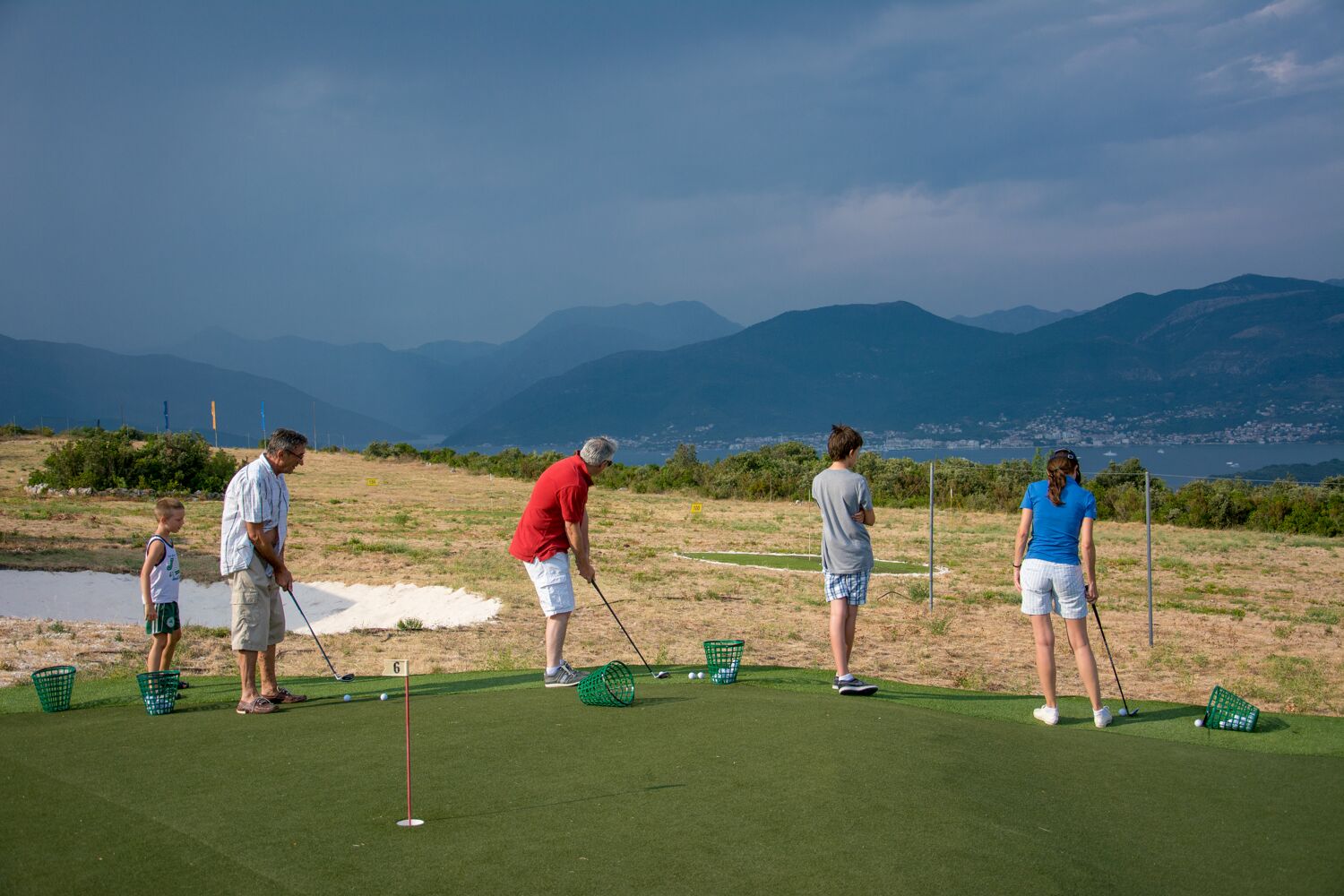
I upset a few people a few days ago with an article called How Dubrovnik is Becoming an Extension of Luxury Tourism in Montenegro. Apologies for those who were offended, but I am only stating what is the truth. As part of the 2.5 billion euro investments of Lustica Bay, Portonovi and Porto Montenegro (to name but three), Lustica Bay will have that Gary Player 18-hole course as an additional luxury tourism offer. With the airports of both Tivat and Dubrovnik offering increasingly year-round services, the options for high-spending luxury tourism are tantalising indeed. And with a visit to Dubrovnik a wonderful extension of that, the future looks very bright indeed. In a recent interview (which you can read here), Player had the following update:
The Marina and Chedi hotel is completed and opened last year, the marina village residences are also open. For the golf, 9 holes will open in 2021 and 18 ready for play in by 2022.
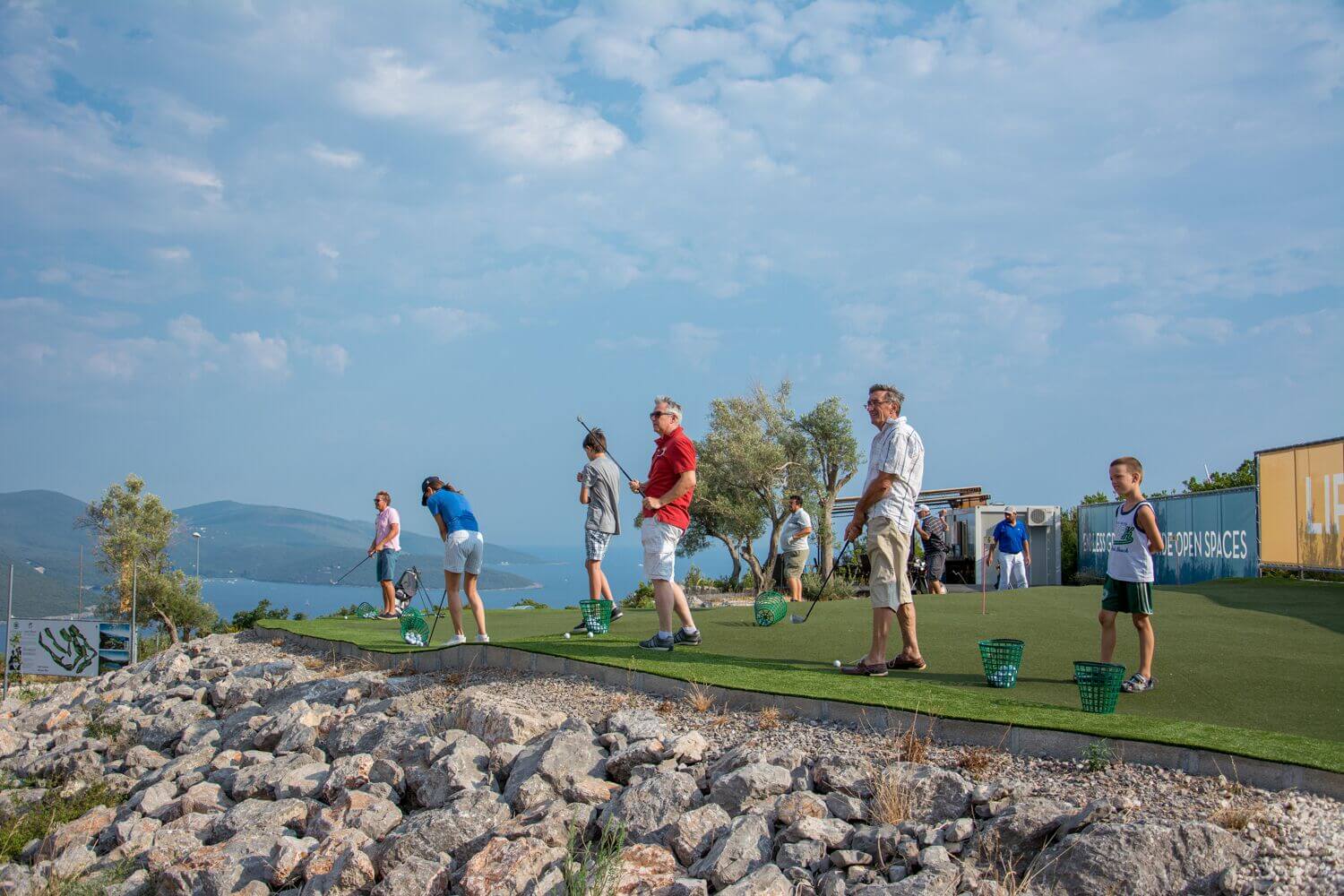
There are certainly many challenges ahead to ensure that the golf course does open on schedule (and discussions on water supply are ongoing, as I understand, for example) but almost all of the excavation and preparatory work has been done. But Player is clearly excited - here he is talking about whether or not the Lustica Bay development is a typical project for him:
Not at all. The course has dramatic elevation changes throughout the layout. The topography is quite steep so the shaping and contouring will be very bold and dynamic with stepped fairways, small cavernous bunkers, and small putting surfaces that will nestle into the steep topography.
We are going to manufacture our own capping sand from the excavated rock by crushing it to the appropriate specification and all the irrigation water will be treated effluent from the nearby town.
The driving range will be open this summer, and the first nine holes next. You can learn more about the Lustica Bay golf facility and keep pace with progress.
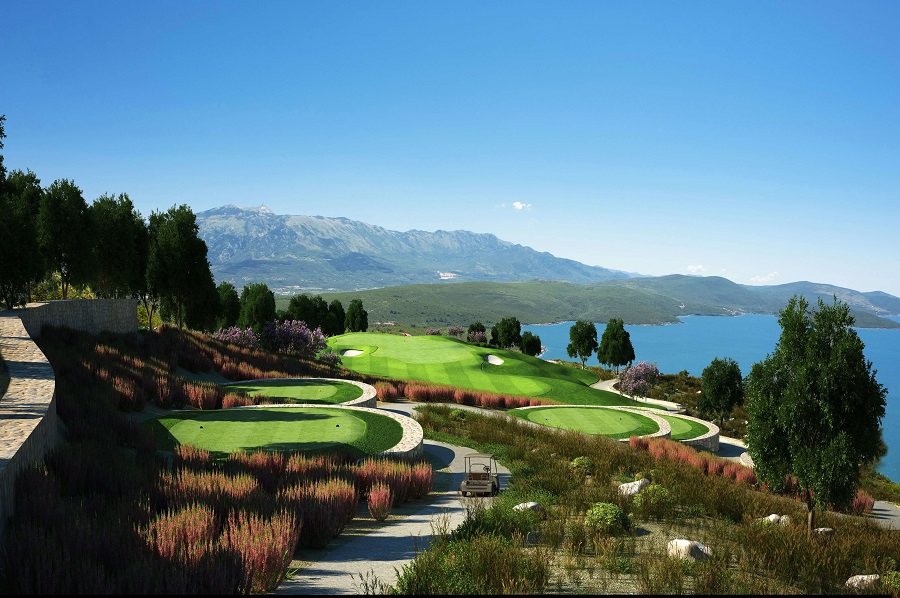
Meanwhile in Croatia...
There are just three golf courses in Croatia, one of which opened in 2009, another in 2004, and the one on Brijuni which dates back to Tito's times. Perhaps so few golf courses is a good thing - as I said, this article is not about golf.
But if the strategy is not to develop Croatia as a golf destination (a very successful strategy so far) then stop putting golf at the heart of tourism strategy. And if the plan is to develop golf as a tourism strategy, what on earth has the ministry and its team been doing for the last six years, and longer?

(Bay of Kotor, Montenegro - Photo credit Marko Stefanek)
Montenegro is not perfect, far from it, but the closer one looks, the more impressive it becomes. And while detractors will talk of the alleged corruption in Montenegro compared to Croatia, let's not forget why Porto Montenegro (and other projects) are not in Croatia. And when compared to Croatia's innovative strategy of 6 years with golf at the heart of what they are trying to achieve, with a result so far only of a 500-million-euro lawsuit, I don't think Montenegro is doing too badly by comparison.
Do you?
Croatian Parliament Speaker Meets with Montenegro Croats
ZAGREB, March 18, 2019 - Croatian Parliament Speaker Gordan Jandroković met with representatives of Montenegro Croats in Kotor and Tivat on Monday, saying he was pleased with the status of the Croat minority and highlighting its contribution to local tradition and culture.
"Croats are loyal citizens of Montenegro but they also want to highlight their contribution to the cultural richness and tradition of this country. Croats are proud of what they created here through the centuries and they are an important bridge between our two states. The Croatian minority is a recognised minority here. They cultivate the Croatian identity and have Montenegro's support in that," said Jandroković, who is attending an Adriatic-Ionian Initiative conference in Budva.
"We talked about the status of Croats in Montenegro and there are always some things we can improve financially. Croats in Montenegro want recognition for their contribution to the cultural and spiritual legacy of this country," he said.
Asked by Hina about the inclusion of the Bokelj Navy on UNESCO's cultural heritage list, he said it was Montenegro's cultural heritage but that its legacy was Croatian. "Through talks with the Montenegrin side, we will try to have it recognised... by UNESCO."
Speaking of Croatian-Montenegrin relations, Jandroković said they were friendly. "Montenegro recently joined NATO, we are partners there and expect even more substantial relations in the future."
He visited the Croatia House cultural centre in Kotor which is owned by Croatia and which Croatia plans to start renovating this year and put to use soon. "I expect it will house the Croatian consulate."
Jandroković said he was impressed by the cultural, spiritual and material richness of the Croatian people in Montenegro. In Tivat, he also met with the Croat business community.
More news about relations between Croatia and Montenegro can be found in the Politics section.
Business Insider: Montenegro not Croatia the 2019 Billionaire Adriatic Destination
March 18, 2019 - Another endorsement of Montenegro as an emerging luxury tourism destination from Business Insider. Meanwhile in Croatia...
One of the things I love about running the Total Project over three countries (Croatia, Montenegro and Slovenia) is the opportunity to meet with a variety of amazing people from all walks of life, as well as the chance to compare and contrast. and move beyond the stereotypes that I, along with many others, have embedded within us.
Until recently, for example, it was the perceived wisdom that Croatia was a much more attractive destination for luxury tourism than Montenegro. Montenegro, so the stereotype went, was a corrupt country and a Russian playground. When I started posting that my observations were in fact that Montenegro was moving ahead of Croatia in terms of luxury tourism, the topic seemed to touch a raw nerve with some of my Croatian friends and readers. This brought on that very familiar Croatian reaction when criticism comes their way - the policy of deflection. Normally the policy is to attack my Britishness (which is fair enough - as if we hadn't caused enough crap in the past, Brexit is pushing us into the world's biggest joke...), but any suggestion that Montenegro is somehow doing better than Croatia is explained by one word.
Corruption.
I always laugh at this argument, the only time you ever hear Croats talking about other countries being more corrupt than their own. The reality of course, is that this is the Balkans baby, and of course Montenegro, as with other countries in the region, has its major issues in this regard. But the difference on this issue between Croatia and Montenegro was nicely summed up by a Russian billionaire investor to an acquaintance of mine:
"There is corruption in every country in the region here. The only difference in Croatia is that you pay the politician and nothing happens, so four years later, you have to pay again. And nothing happens."
I digress.
A year ago, I made my first visit to Montenegro in years, and I was stunned. I knew all about Porto Montenegro, of course, but what was happening at Lustica Bay was mindblowing for someone living in Croatia. A 1.1 billion euro luxury tourism investment that was actually happening. When I came home from, I wrote Lessons from Montenegro: Why Lustica Bay Will Never Happen in Croatia.
Porto Montenegro, Lustica Bay, Portonovi - the luxury developments kept on coming, and the super-rich were arriving in their superyachts. Montenegro was de facto becoming the Adriatic destination of choice for the billionaires. Meanwhile in Croatia...
I was curious to see which were the biggest tourism investments on the Croatian coast. Thinking our heroes at the Ministry of Tourism might have some idea, I contacted them, but in the end had to do my own research. The largest ever tourism investment was Falkensteiner Punta Skala near Zadar (and very lovely it is too, and this summer will be home to The Monster, the world's largest bouncy castle), at 160 million euro in 2011, followed by Sun Gardens Dubrovnik at 150 million euro back in 2009. Nothing bigger in the intervening years in Croatia. Indeed, if you looked at the 2018 dollar value, the biggest investment ever was some $245 million, back in 1971 - Learn more on Lessons from Montenegro: Penthouse Haludovo in 1971, Croatia's Biggest Adriatic Investment.
But Croatia is preserving its coastline, say the defenders, and yes they have a point. But tell that to the many foreign investors who have spent millions buying up land they were told they can build on (and may well in time). The coastal map of Croatia with all the planned developments in would be a very interesting one to read.
Croatia, one of the most beautiful countries in the world and a potential luxury tourism haven if ever there was one, is missing out. Having worked as an aid worker back in 1994 during the genocide, I was amazed to learn that Rwanda too is becoming a luxury tourism destination. The major luxury tourism hotel brands are opening in Kigali but not Croatia.
And so to the catalyst for this article - the Business Insider These are the 15 hottest destinations billionaires are traveling to in 2019, which was published over the weekend.
No Italy. No Greece. No Croatia. Just one entry on the Adriatic (Rwanda also made the list by the way):
Montenegro.
This wasn't a random list of countries put together, but based on
"Business Insider teamed up with boutique luxury travel agency Original Travel, which plans trips for high-net-worth individuals, to find out the hottest spots the elite are spending their money on in 2019. They based this ranking on the number of bookings and performance; the latter was assessed by feedback, their expertise, and client inquiries."
About Montenegro they said:
"Montenegro is set for a luxury upgrade in 2019 with the Chedi Lustica Bay newly opened and One & Only opening its first resort in Europe next year with Portonovi in Boka Bay," he said.
"Lesser-known than neighbors Croatia and Greece, the tiny slice of Adriatic coastline that is Montenegro has previously lacked high-quality accommodation (other than the Aman network) to rival its fjord landscapes, Tom Barber, co-founder of Original Travel, told Business Insider.
"Montenegro is set for a luxury upgrade in 2019 with the Chedi Lustica Bay newly opened and One & Only opening its first resort in Europe next year with Portonovi in Boka Bay," he said."
(Editor's note Lustica Bay last month won an award as the Best Property Development in Europe at the Luxury Network International Awards in Dubai)
About Rwanda they said:
"Rwanda was named a new African luxury destination to watch in 2018 by Luxury Travel Mag. The destination is all about nature and wildlife, home to three national parks: Akagera, Nyungwe, and the Volcanoes National Park.
"The latter is the perfect spot — and one of the few remaining places — to see mountain gorillas in the wild, according to Original Travel."
About Croatia they said:
Absolutely nothing.
But as long as Croatia keeps cramming tourists and cruise ship passengers into its old towns, the numbers will look good and the season will be a success.
If you are interested in learning more about Montenegro, follow our sister site, Total Montenegro News.
Croatia's INA Oil Company Expands Retail to Montenegro
ZAGREB, March 17, 2019 - Croatia's energy group INA, whose biggest shareholders are Hungary's MOL with just below 50 percent and the Croatian government with an almost 45 percent stake, has expanded its retail network in Montenegro by acquiring five new locations from petrol station chain Pavgord.
The locations include the capital Podgorica and the Adriatic city of Kotor.
INA will now operate 11 petrol stations in Montenegro, increasing its market share to 15 percent from just one percent in 2017.
The company says its medium-term goal is to become a major player in the Montenegro market.
The INA oil and gas company generated a net profit of 1.18 billion kuna in 2018, down 3.7% from 2017, its financial statement showed.
Total revenue increased by 19.5% to 23.35 billion kuna, while expenditure reached 21.83 billion kuna, up 21.5% on the year.
EBITDA rose by 3.0% to 3.49 billion kuna and net sales revenue increased by 20% to 22.35 billion kuna. Capital expenditure amounted to 1.82 billion kuna, an increase of 30% on the year.
More news about INA can be found in the Business section.
Croatia and Montenegro Developing Closer Economic Cooperation
ZAGREB, February 13, 2019 - There are numerous possibilities for strengthening economic cooperation between Croatia and Montenegro, notably in the energy sector, transport, construction and tourism, it was said at a Croatian-Montenegrin business forum, held at the Croatian Chamber of Commerce (HGK) in Zagreb on Wednesday.
"Cooperation possibilities between Montenegro and Croatia have not been adequately used so far. Even though it has been growing, their trade is too modest considering their proximity to one another. But as evidenced by the presence of representatives of more than 100 companies at today's forum, opportunity always prevails over difficulty in the business sector," said HGK vice-president Ivan Barbarić.
Barbarić said that despite connectivity problems, there was room for closer cooperation in energy and transport, notably the renovation of railway carriages, as well as in construction, port and marina reconstruction, the IT sector and tourism.
"About 20 Croatian companies and representations are active in Montenegro. In the first 11 months of 2018 we recorded a 15% increase in exports, but we believe that we can do much better," said Barbarić.
The head of the Montenegrin Chamber of Commerce, Ivan Saveljić, said that he was confident that there were numerous business opportunities that should be used to promote the economic cooperation between the two countries.
"Montenegro is oriented to the region and naturally, to European integration processes, and on the path of Euro-Atlantic integration we can use the experiences gathered by Croatia, which has just completed that process," Saveljić said, underlining the possibility of cooperation in environmental protection and energy efficiency and joint participation in NATO tenders.
The Zagreb forum, organised by the HGK and the Montenegrin Chamber of Commerce, also included business-to-business talks.
More news on the business and other relations between Croatia and the neighbouring Montenegro can be found in the Business section.

